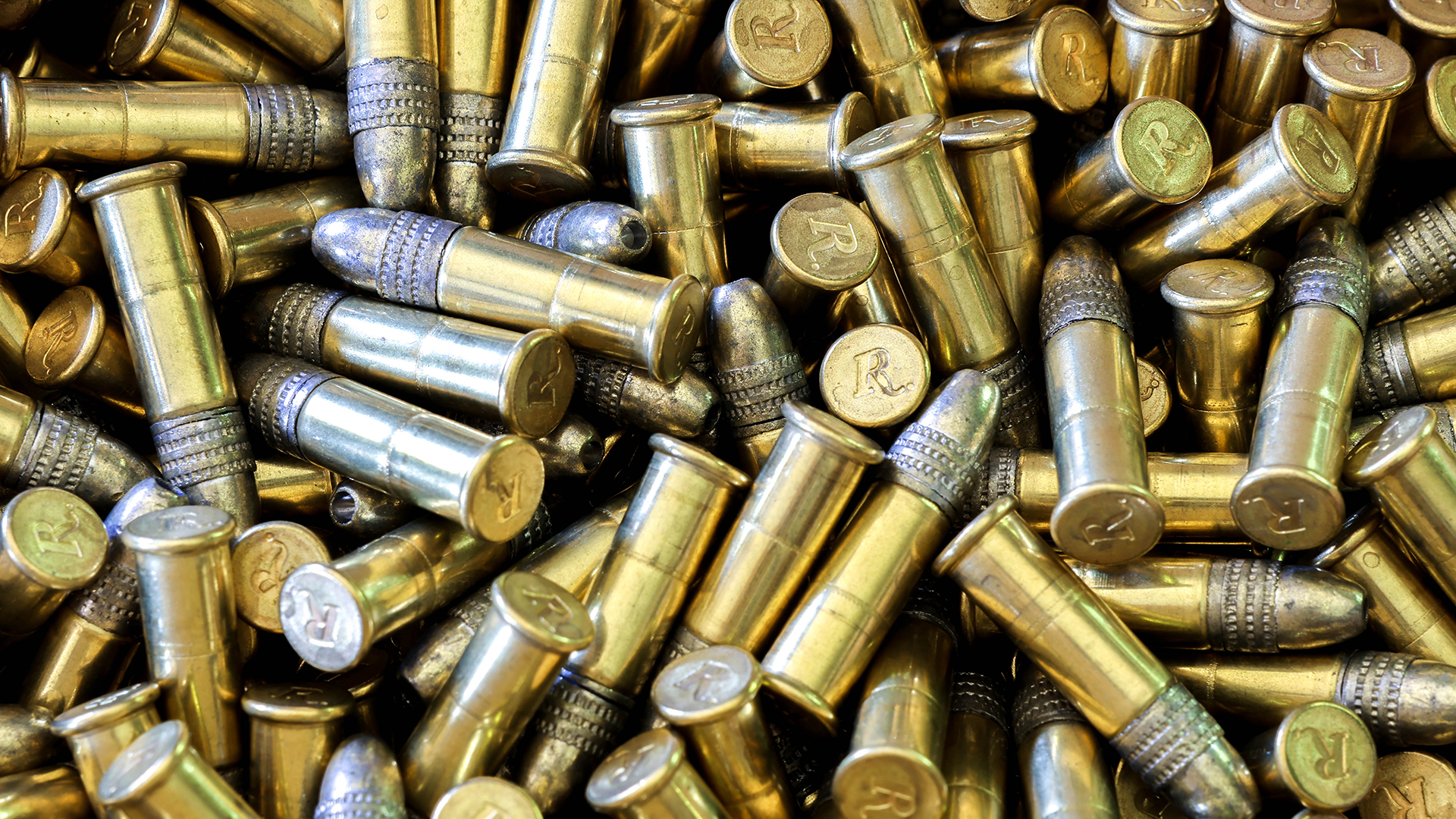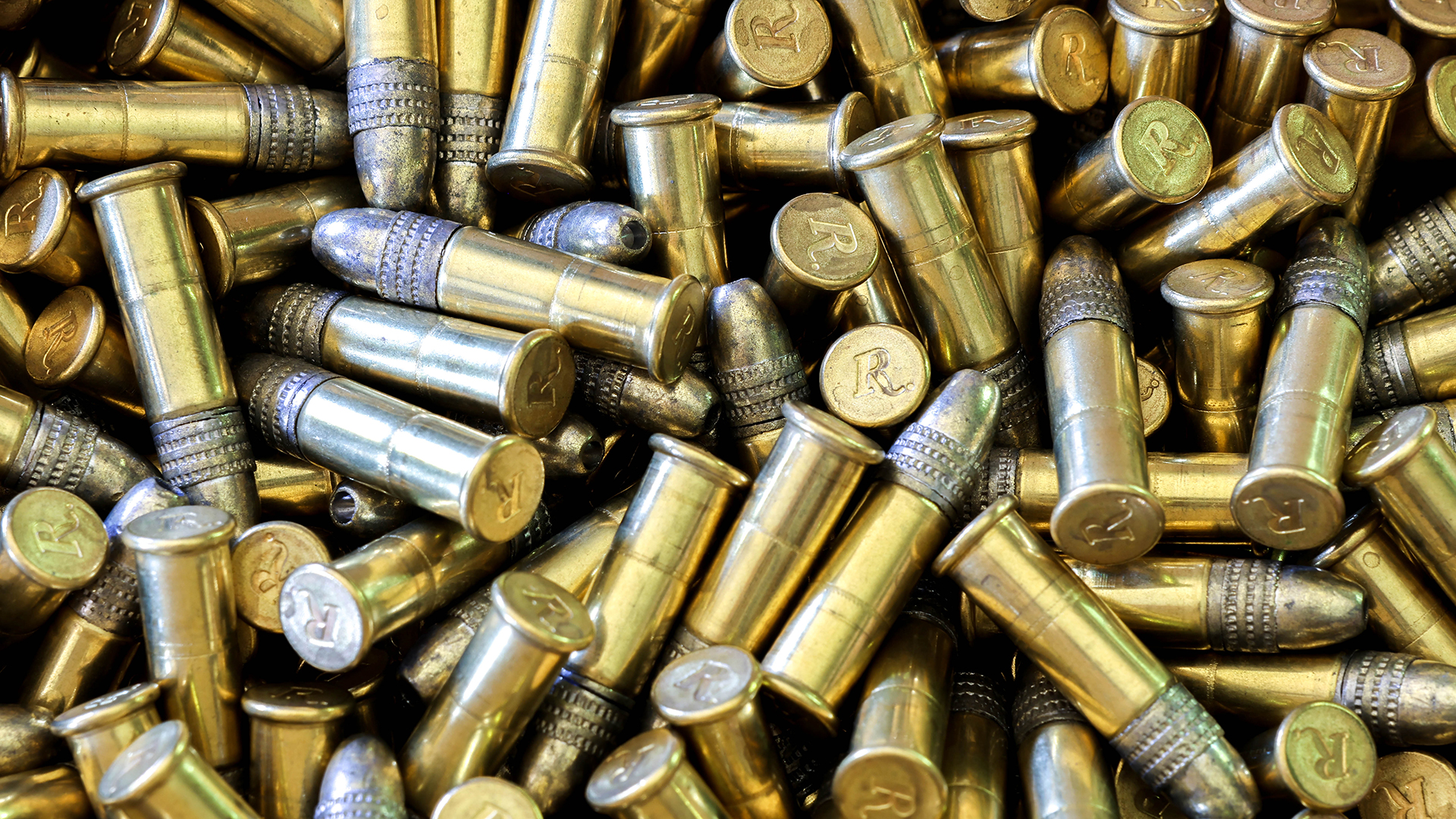
My, how projectile technology has evolved in the last quarter century; where the cup-and-core softpoints dominated the 20th century, the monometal and bonded core designs had taken root by the turn of the century and will not let go. We’ve got bullets with partitioned cores, bullets with no cores at all, bullets with metallic tips, polymer tips; you name it and it’s probably available.
While much of the history of projectiles has been concerned with keeping a bullet together, Lehigh Defense’s Controlled Chaos is designed to do exactly the opposite. An all-copper monometal hollow-point design, the Controlled Chaos relies upon a fluid-rich environment to expand the nose section of the bullet, actually breaking the front portion of the bullet into small petals that radiate outward from the bullet’s path. These petals cause significant damage from an energy spike upon impact, while the base of the projectile—which does not expand and remains at caliber dimension—continues on for deep penetration. The combination of these two phases of terminal performance results in a quick and humane kill.

While the Controlled Chaos is not the first bullet I’ve used that operates on this principal of extreme frangibility, this is an excellent design, which performed very well at the range, and fed perfectly within a number of different rifles. Having dealt with the Controlled Chaos bullets earlier, in component form, I was ecstatic when the owner of Lehigh Defense—none other than Mr. Bill Wilson of Wilson Combat fame—called my phone, and explained that they have just come out with factory loaded ammunition, and he’d love to send some along for testing and evaluation. What I received was a pair of loads, both in the universal .308 Winchester, with the main hunting load built around the 152-grain Controlled Chaos bullet at an advertised muzzle velocity of 2800 fps (from a 24-inch barrel) and a low-recoil variant, using a 125-grain Controlled Chaos bullet at an advertised muzzle velocity of 2600 fps (this time from a 20-inch barrel).
I was very familiar with the 152-grain Controlled Chaos bullet, having handloaded it in the .308 Winchester before. Despite its relatively low weight for caliber, the bullet measures 1.270 inches overall, and though Lehigh doesn’t state it on the box, it is a boattail hollowpoint, with a G1 ballistic coefficient of .333. Its ogive measures .68 inch, and the hollow cavity extends .75 inch from the meplat into the shank of the bullet. A design like this, in the more popular copper monometal bullets, would see the weight-rearward conformation often failing to give straight-line penetration. Upon impact, the heavier rear section of the projectile can often kick out to one side or another, much like a rear-wheel-drive car in the snow. With a design that sees the ogive break into petals and fall away from the base upon impact, it has been my overwhelming experience that the base—which stays at original diameter—will often deliver the straight-line penetration that hunters adore. In other words, if you place the shot properly, you’ll have heavy trauma on the entrance side from the energy spike and smaller wound channels of the petals, with the base continuing on through the vital organs of game.
Despite the fact that the Controlled Chaos is lead-free (and will therefore be longer than a lead bullet of the same weight), the 152-grain bullet extends only about half an inch into the case, maximizing the space for the powder column. The bullet has three bands to engage the rifling, with grooves cut in the shank to keep bearing surface and pressures low, as well as a nice, deep cannelure for crimping the bullet in place. Looking at the 125-grain variant, you’ll see a similar design, but with a slightly shorter ogive and visibly shorter shank or base. The cartridge overall length for the 152-grain load measured 2.723 inches, and the 125-grain load measured 2.684 inches.
 Upon impact, the nose section of the Controlled Chaos bullet expands to radiate petals outward; the base does not expand but continues to penetrate.
Upon impact, the nose section of the Controlled Chaos bullet expands to radiate petals outward; the base does not expand but continues to penetrate.
To test the pair of loads at the range, I grabbed my trusty, rusty, old Ruger Model 77 MKII, topped with a vintage Leupold Vari-X II 3-9x40AO; while this gun hasn’t been known for its hair-splitting accuracy (the trigger is on the heavier side), it has been utterly reliable and has procured tons of meat over the last 30 years. As a hunting rifle and not a target rifle, I’ve always relied on it to give honest data. I grabbed a box each of the two loads provided and headed to my little 100-yard range just outside my office.
Starting with Lehigh’s 152-grain load, the first three-shot group had me looking twice; right on the bull, there was a trio of holes about ⅝ inch apart. The second group was the stunner—it was one ragged hole measuring just more than ¼ inch from center to center. The third group opened up to .8 inch, and if that were the average I’d still have been more than pleased. Bottom line is that this Lehigh Defense load shot very well, with each group hitting on the bull (the rifle was zeroed with lead core ammunition), and velocity spreads were commensurate with the consistent precision I saw. Recoil was manageable—though I’ve never found the recoil level of the .308 Winchester to be punishing in any way—and the Starline brass cases Lehigh uses had no problem feeding or extracting. I tested feeding in a couple other .308 rifles as well, just to make sure the larger hollow-point meplat wouldn’t hang up in any way; it performed just fine in all the guns.
The Low Recoil loads operated as advertised, with recoil dropping off considerably in comparison to the 152-grain load, though they actually printed a bit higher on the target than did the heavier load. Three-shot groups averaged .9 inch, rather consistently, and despite the seemingly diminutive weight of this bullet, I feel comfortable saying it’ll work just fine for deer at Eastern ranges inside 150 yards. If a young hunter wanted to “grow” into his or her big-game rifle, owning a .308 Winchester is surely a great choice for an all-around cartridge, and this load will allow a younger or new shooter to accurately place his or her shots without the recoil of full-house loads and still kill effectively.
Using my trusty Oehler 35P chronograph, my 22-inch barrel pushed the 152-grain load to 2745 fps—slightly below the advertised velocity from a 24-inch barrel—and the 125-grain load left my muzzle at 2615 fps, just above the advertised value.
Using an inertia hammer to pull apart one of the 152-grain loads, I found that Lehigh Defense is using a ball powder to fuel their ammunition, which makes perfect sense in the .308 Winchester, as real estate inside the case comes at a premium. Inspecting the ammo, I found all the primers were seated to a uniform depth, slightly recessed into the pocket, as they should be. In fact, the only defect I found across four boxes of ammunition was a slight dent on the shoulder of one case, and that wouldn’t pose an issue at all. All in all, I came away impressed by the Lehigh Defense loads, and look forward to taking them afield this fall.
In component form, the Controlled Chaos is available in .204 inch diameter, 30 grains; .224 inch diameter, 32, 38, 45, 55, 62 and 72 grains; .243 inch diameter, 85 grains; .257 inch diameter, 102 grains; .264 inch diameter, 110 and 130 grains; .277 inch diameter, 112 and 127 grains; .284 inch diameter, 142 grains; .308 inch diameter, 110, 115, 125, 140, 152 and 175 grains; .311-inch diameter, 123 grains; .355 inch diameter, 150 grains, and .358 inch diameter, 200 grains. Lehigh Defense ammunition is currently available in .223 Remington, 45, 55 and 62 grains; 300 HAM’R, 125 grains; 300 Blackout, 115 and 125 grains; and .308 Winchester, 125 and 152 grains (tested).

Technical Specifications
• Cartridges and Bullet Weights Available: .223 Rem., 45-gr., 55-gr., 62-gr.; .308 Win., 125-gr. (tested), 152-gr. (tested); 300 Blackout, 115-gr., 125-gr.; 300 HAM’R, 125-gr.; 350 Legend, 150-gr.
• Bullet Type(s)/Style(s): Lehigh Defense Controlled Chaos/all-copper boattail hollow-point
• Ballistic Coefficient (G1): .292 (.308 Win., 125-gr.); .333 (.308 Win., 152-gr.)
• Muzzle Velocity: 2600 fps (.308 Win., 125-gr.); 2800 fps (.308 Win., 152-gr.)
• Muzzle Energy: 1,877 ft.-lbs. (.308 Win., 125-gr.); 2,646 ft.-lbs. (.308 Win., 152-gr.)
• Uses: deer, bear, hogs
• MSRP per box: $64.95 - $66.49; lehighdefense.com



































